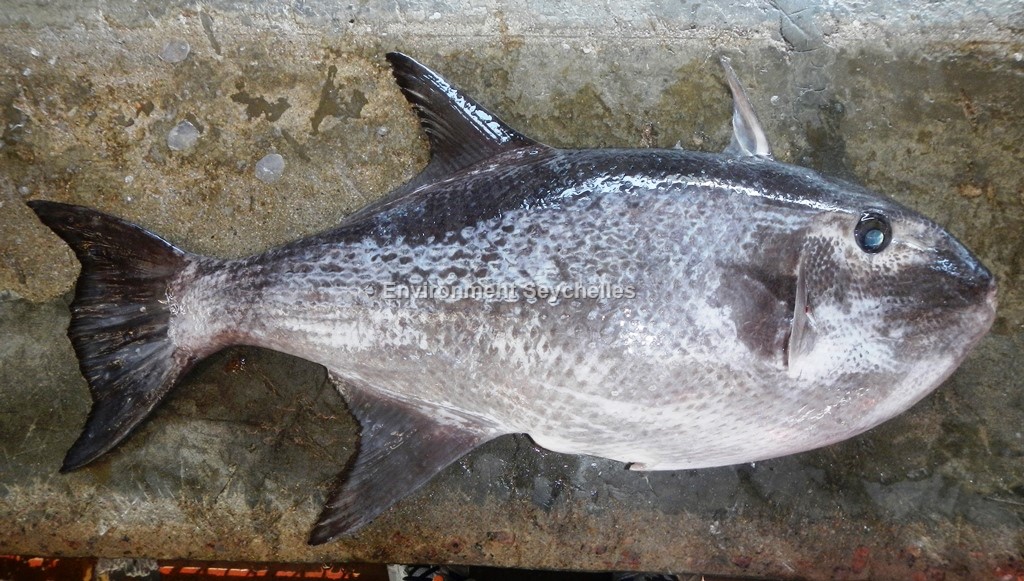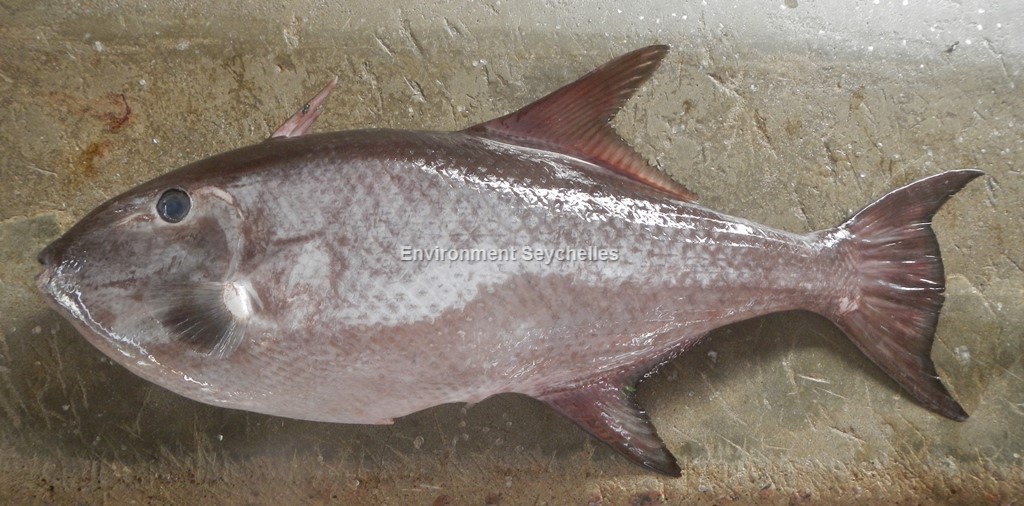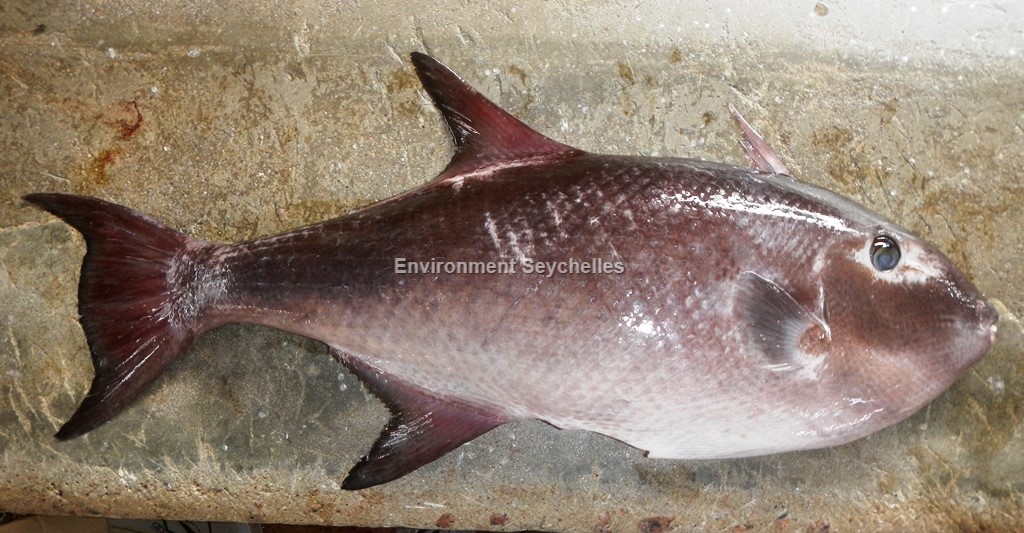Description:
Dorsal spines: 3; Dorsal rays: 23-26; Anal spines: 0; Anal rays: 21-23.
Body more slender than congeners (body deeper in juveniles). Dorsal profile of snout slightly concave in juveniles and slightly convex in adults. Deep groove in front of
eye extending beneath nostrils along upper 3rd of snout. Nostrils small, located just in front of orbital rim. Interorbital somewhat depressed. Mouth small and terminal.
Teeth incisiform, sharp and notched on the edges, for each side of jaws, with an inner three plate like teeth on each side of upper jaw. Gill opening slightly oblique
sloping in posterior dorsal direction. Absence of enlarged scales behind gill opening. Soft dorsal and anal fins strongly pointed and falcate in adults and about same size.
Caudal peduncle long and moderately broad. Caudal fin of adults double emarginate with produced lobes. Juveniles with rounded caudal fin. Body scale rows 35 to 39;
head scale rows 25 to 29.
Colour. Variable. Grey, brown or purplish-brown shading paler ventrally. Distal edges of caudal anal and second dorsal fins darker to blackish. Pectoral fins grey.
Size:
Maturity: Lm unknown. Range unknown. Max Length: 60cm TL.
Habitat and Ecology:
Benthopelagic. Enters the shallows to lay eggs in a nest in sand.
Fishery Status:
This species is not protected or subject to fishery regulations. It is caught in the handline fishery, it is a relatively rare component of the catch, but observed periodically.
Notes:
New record for Seychelles. First documented in 19/11/2016 by J. Nevill, and recorded periodically since then, sometimes 5-6 being landed in same catch.
Canthidermis macrolepis is readily distinguished from congeners in having fewer body scale rows (35 to 40 versus 39 to 58). Juveniles are readily distinguished from those
of congeners by scale morphology (relatively long, branched, fleshy outgrowths present on body and head scales versus fleshy outgrowths shorten unbranched or absent.
References:
Baranes, A. (2005). Note on the occurrence of two rare triggerfishes (Balistidae) from the Gulf of Aqaba, northern Red Sea. Ichthyological notes, Cybium 2005, 29(4): 407-409.
Gill, A.C. & Randall, J.E. (1997). Redescription of and lectotype designation for Balistes macrolepis Boulenger, 1887, a senior synonym of Canthidermis longirostris Tortonese,
1954 and C. villosus Fedoryako, 1979 (Teleostei, Tetraodontiformes, Balistidae). Bull. Nat. Hist. Mus. Lond. (Zool.) 63(1): 27-31.
Froese, R. & D. Pauly. Eds. (2019). FishBase. https://www.fishbase.in/summary/46433 (25/08/19).
Citation:
Nevill, J.E.G. (2020). Canthidermis macrolepis, Largescale triggerfish. Seychelles Seatizens. www.seatizens.sc. https://seatizens.sc/species/canthidermis-macrolepis-boulenger-1888/ (edited 18/06/22).




There are no comments